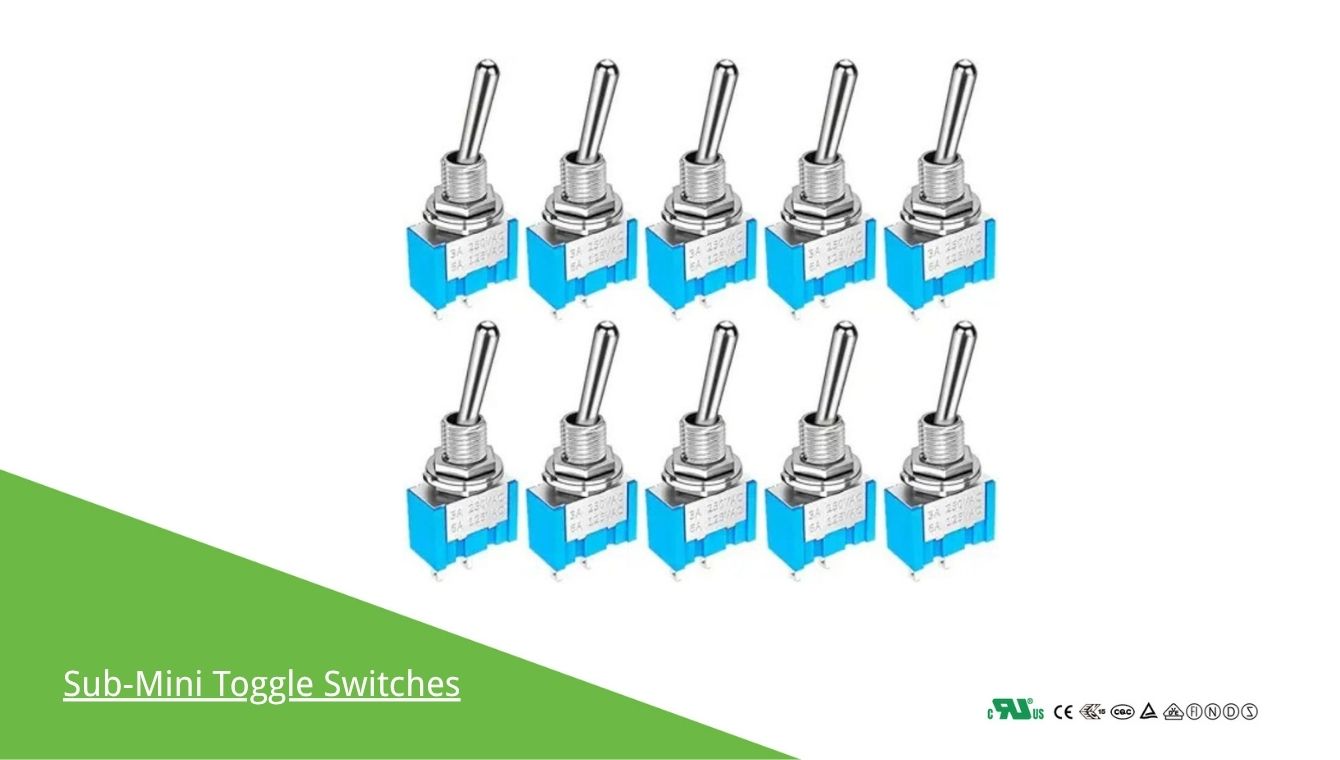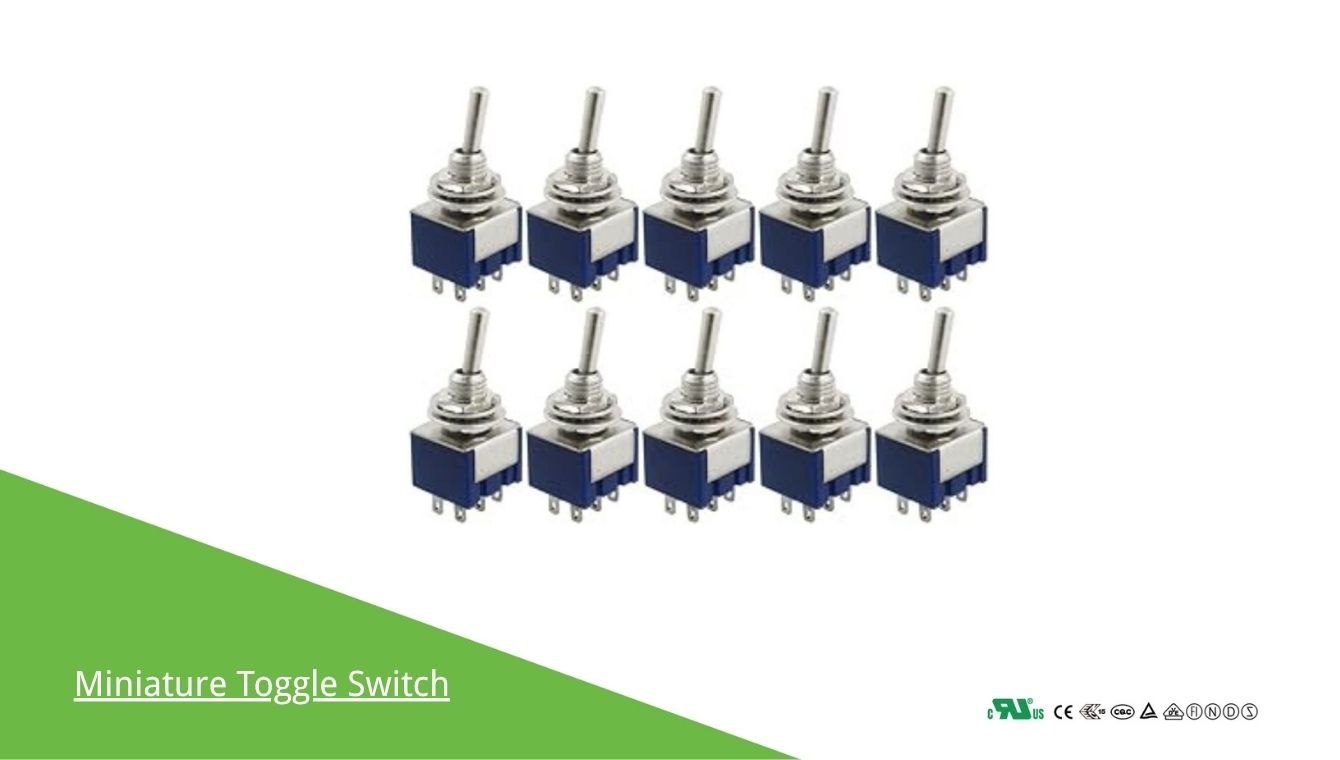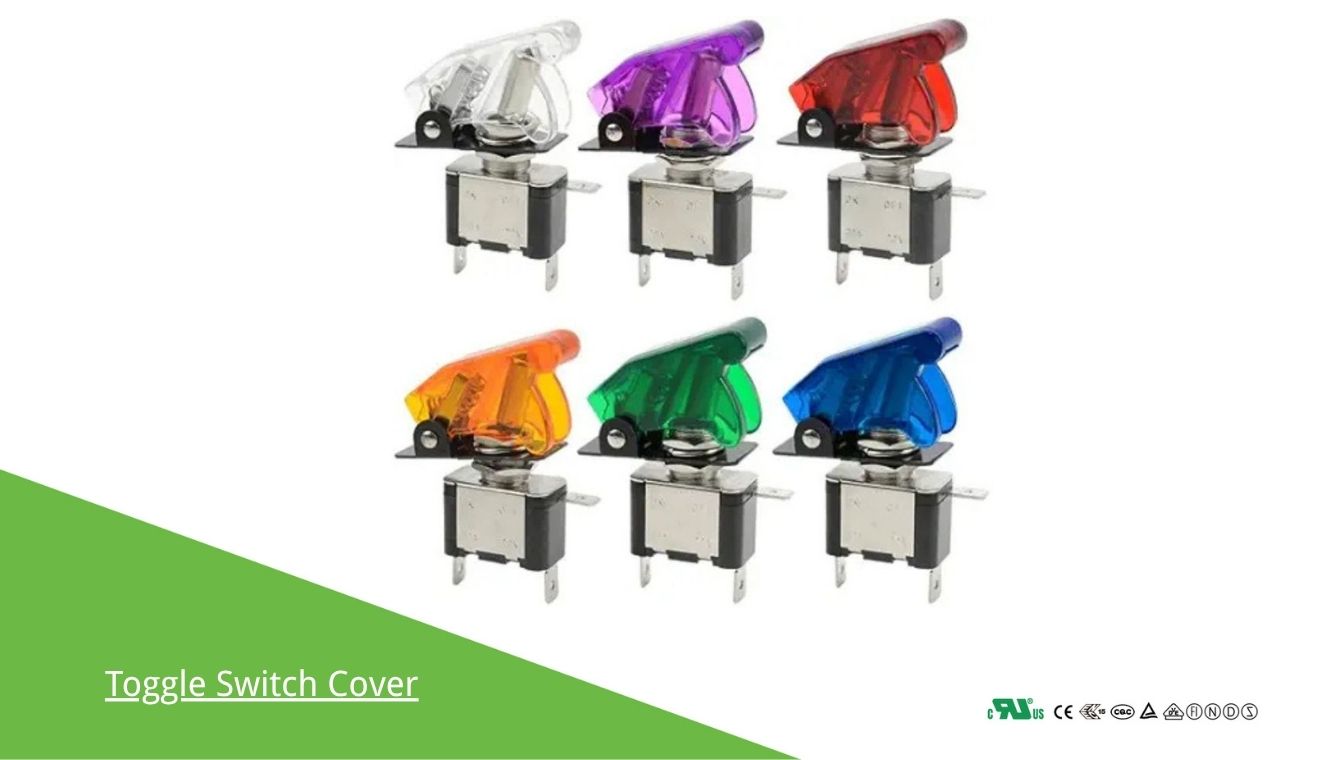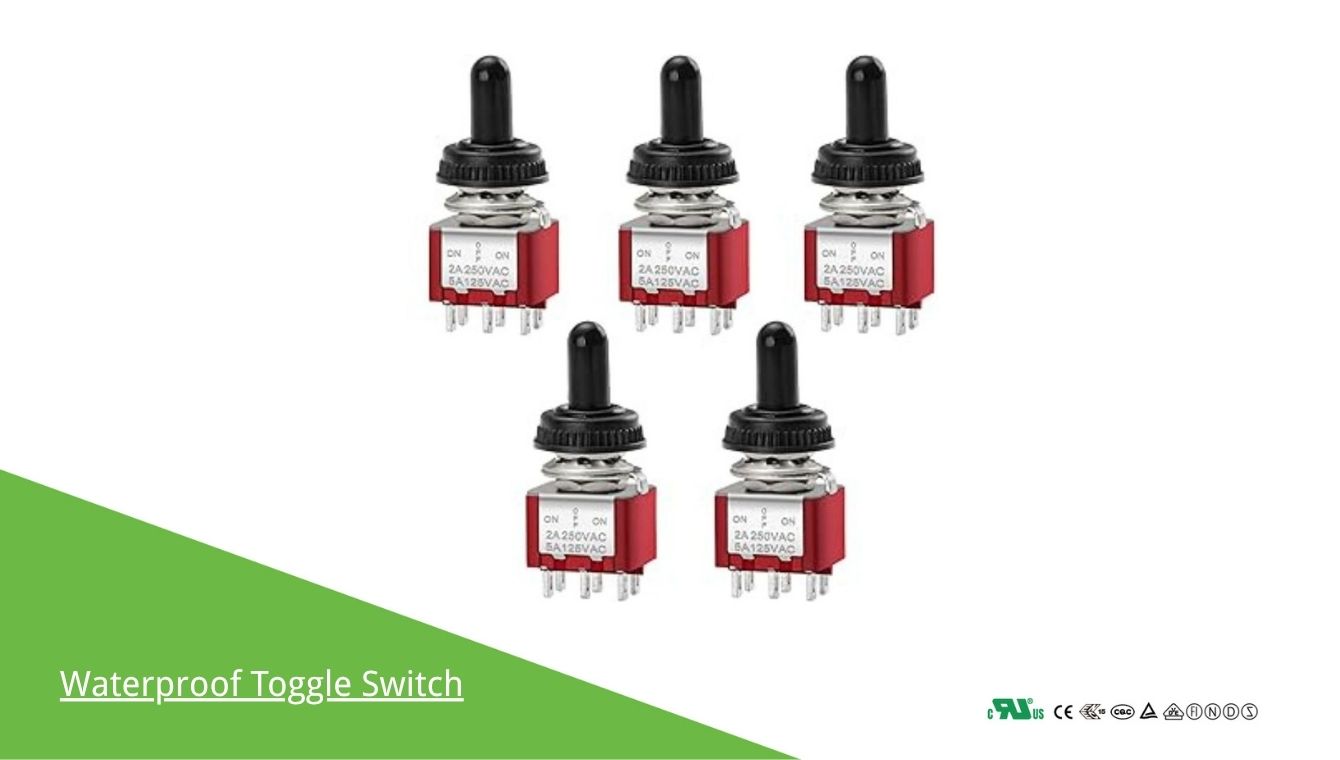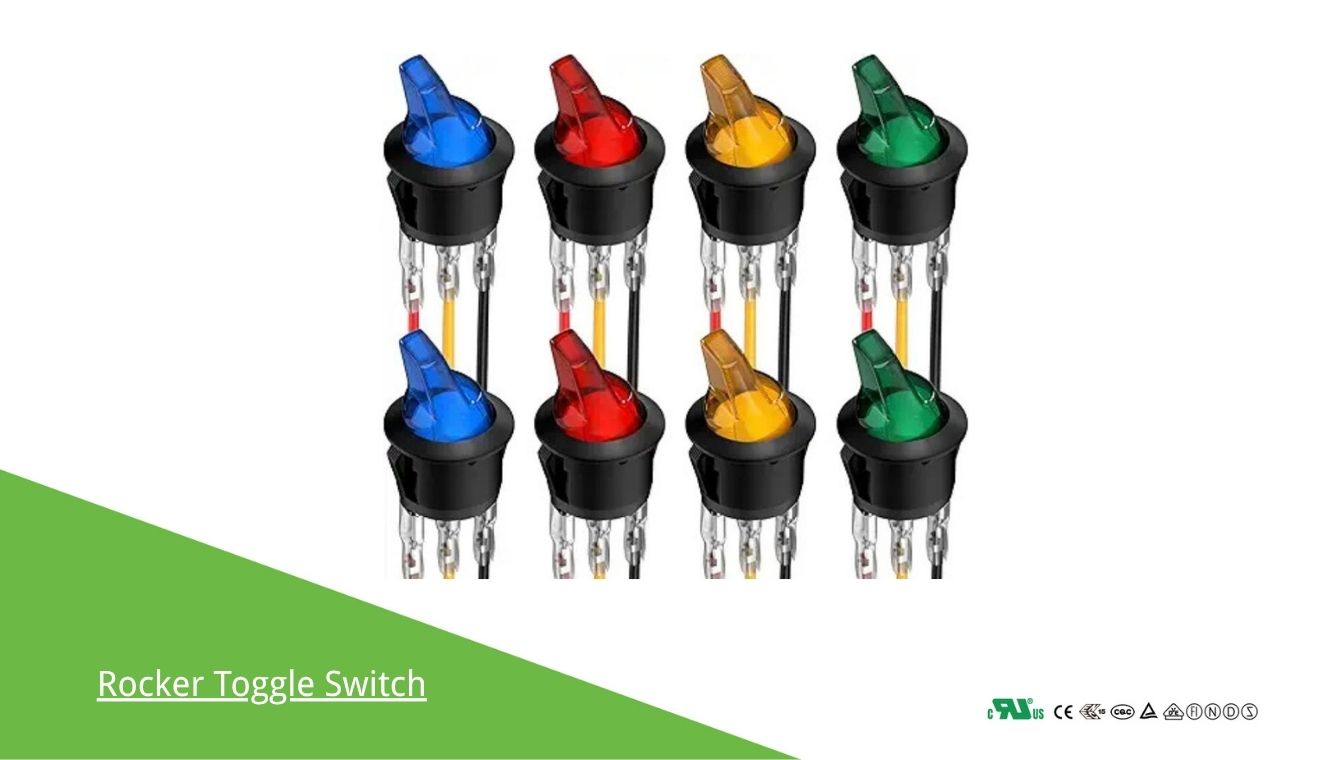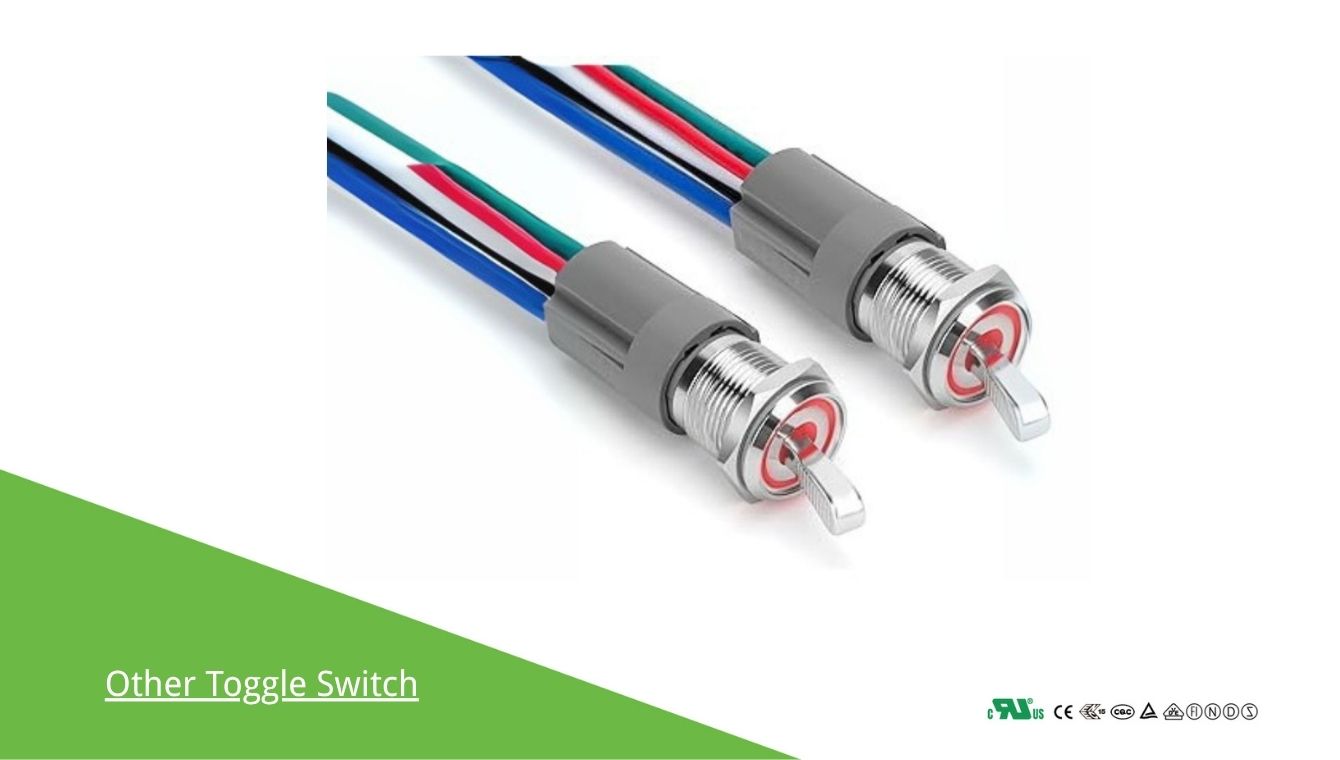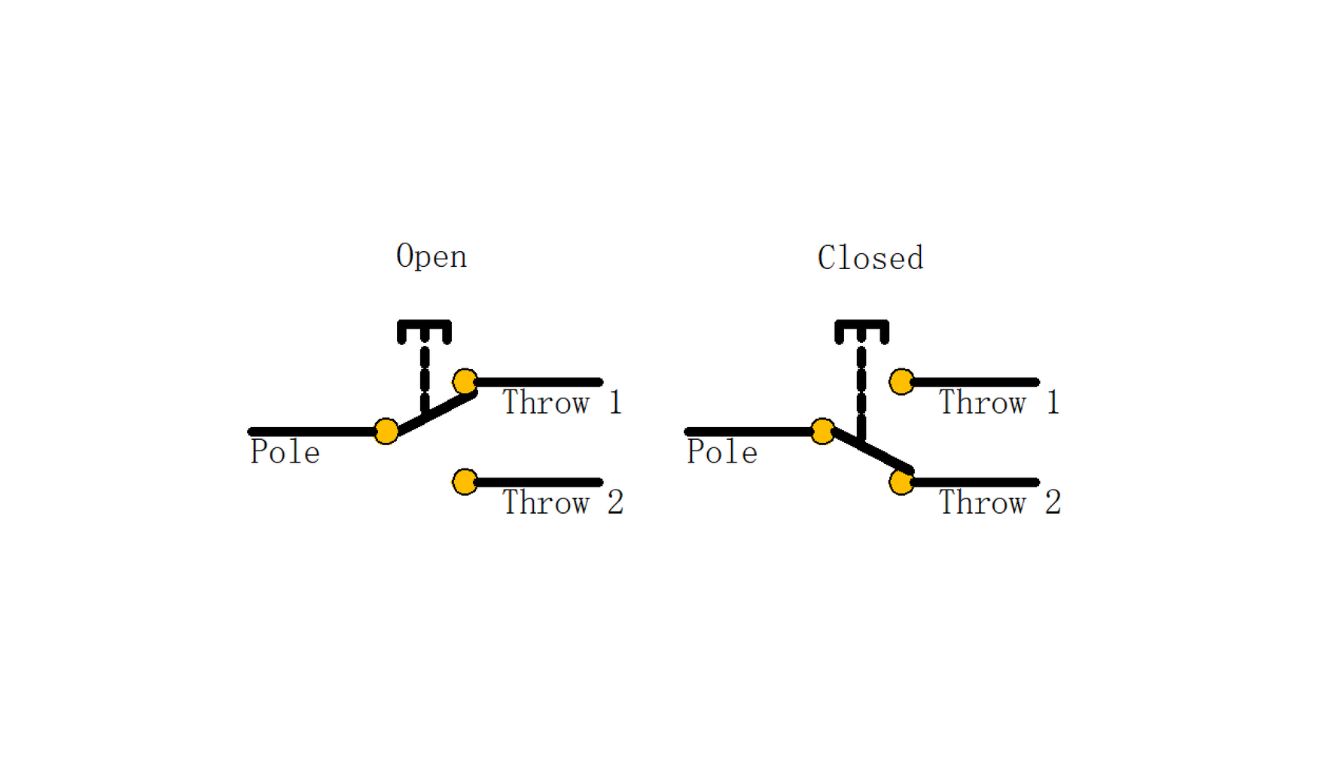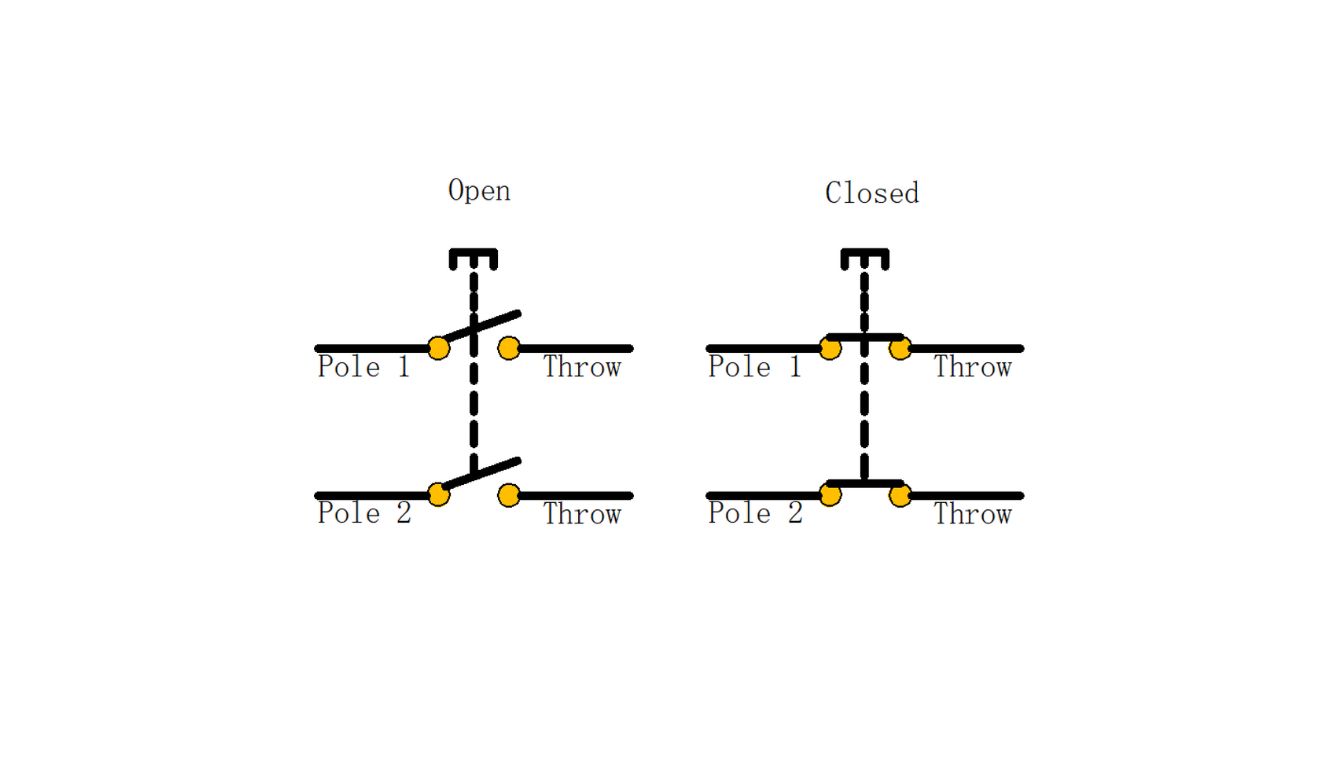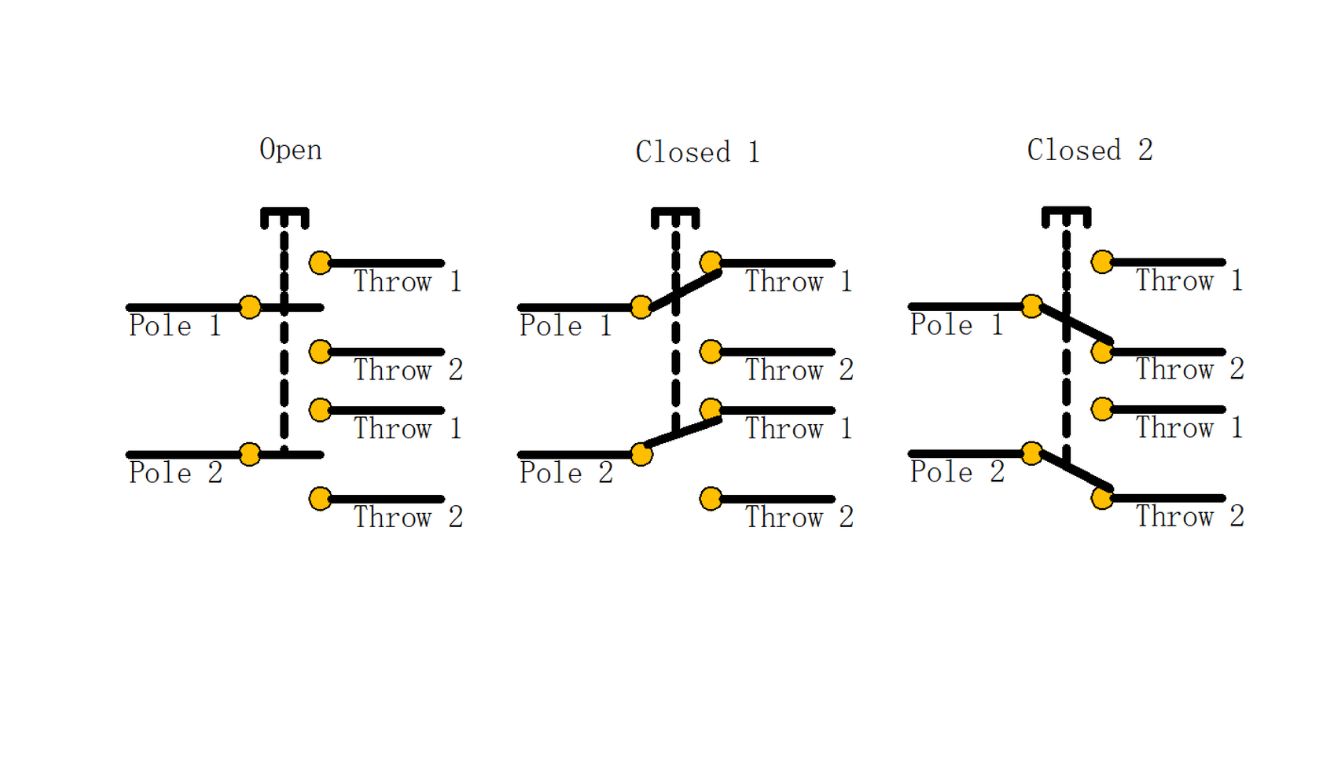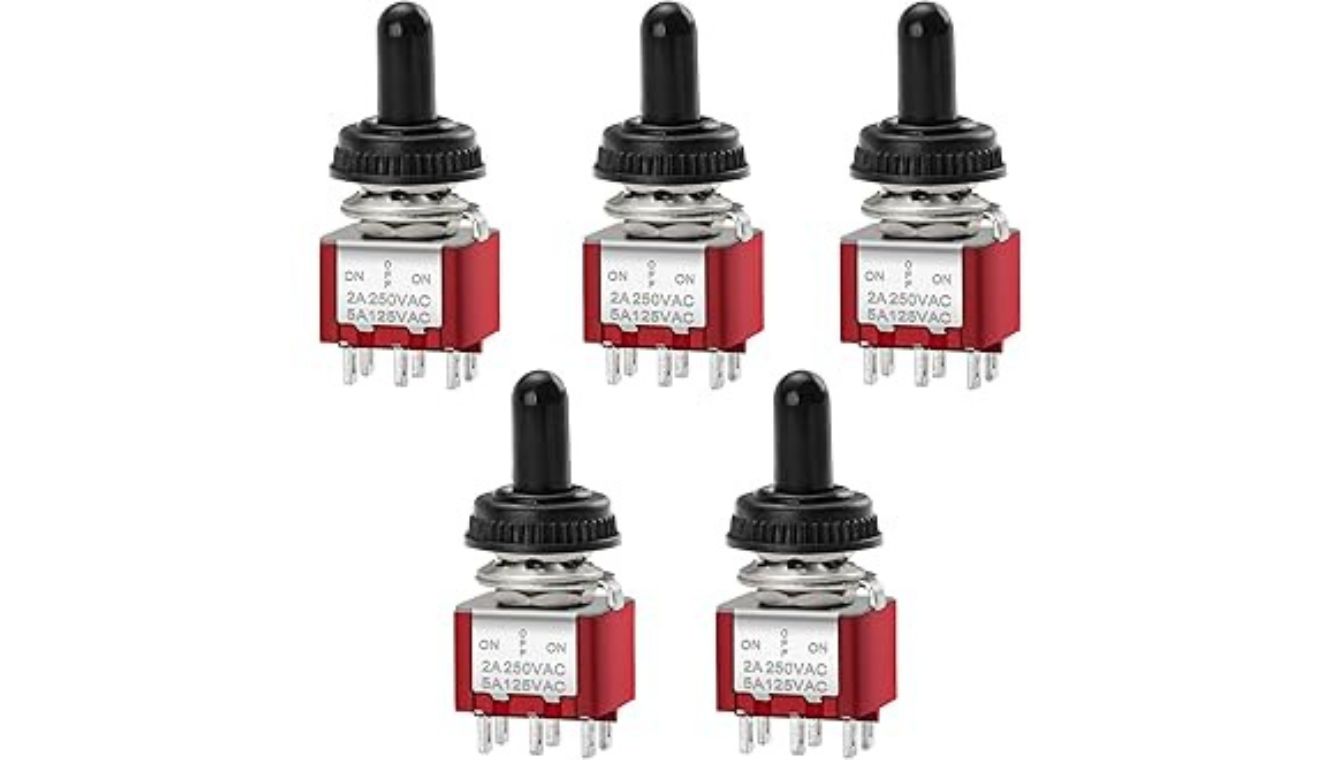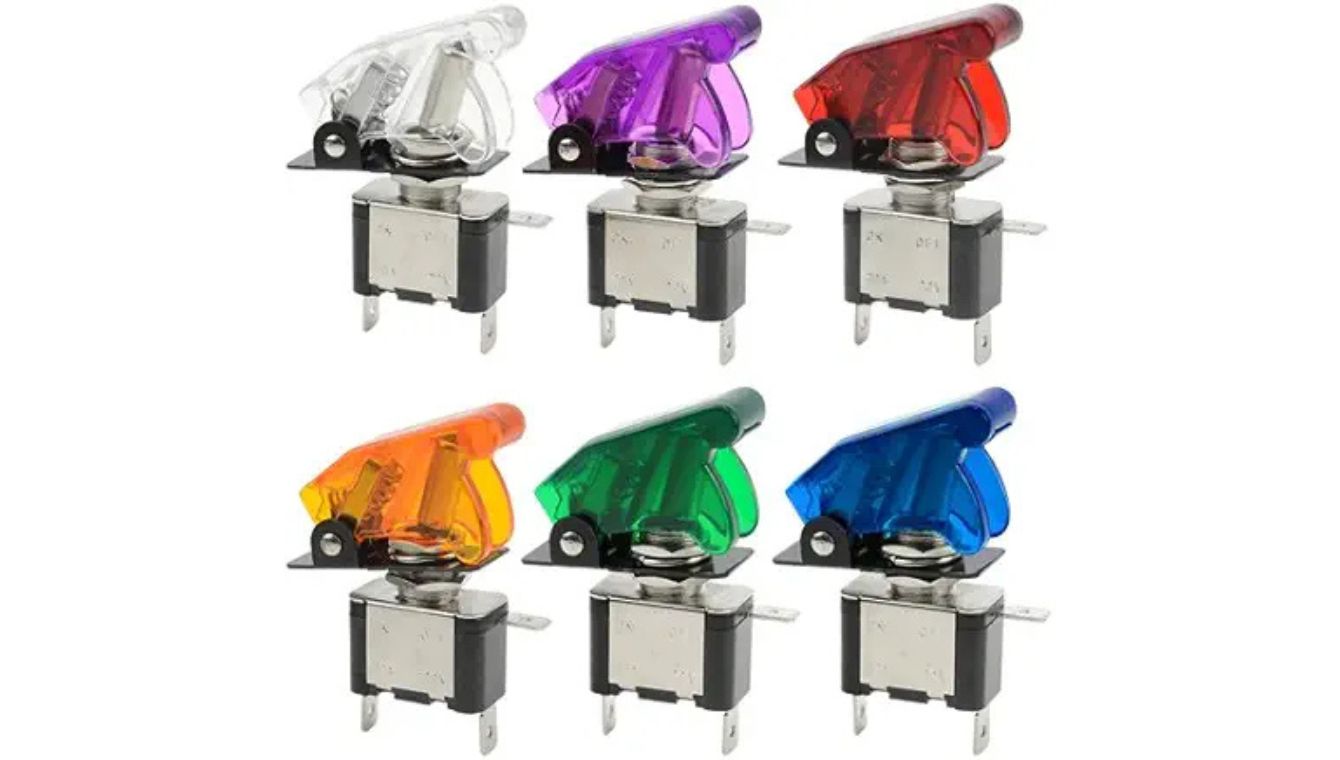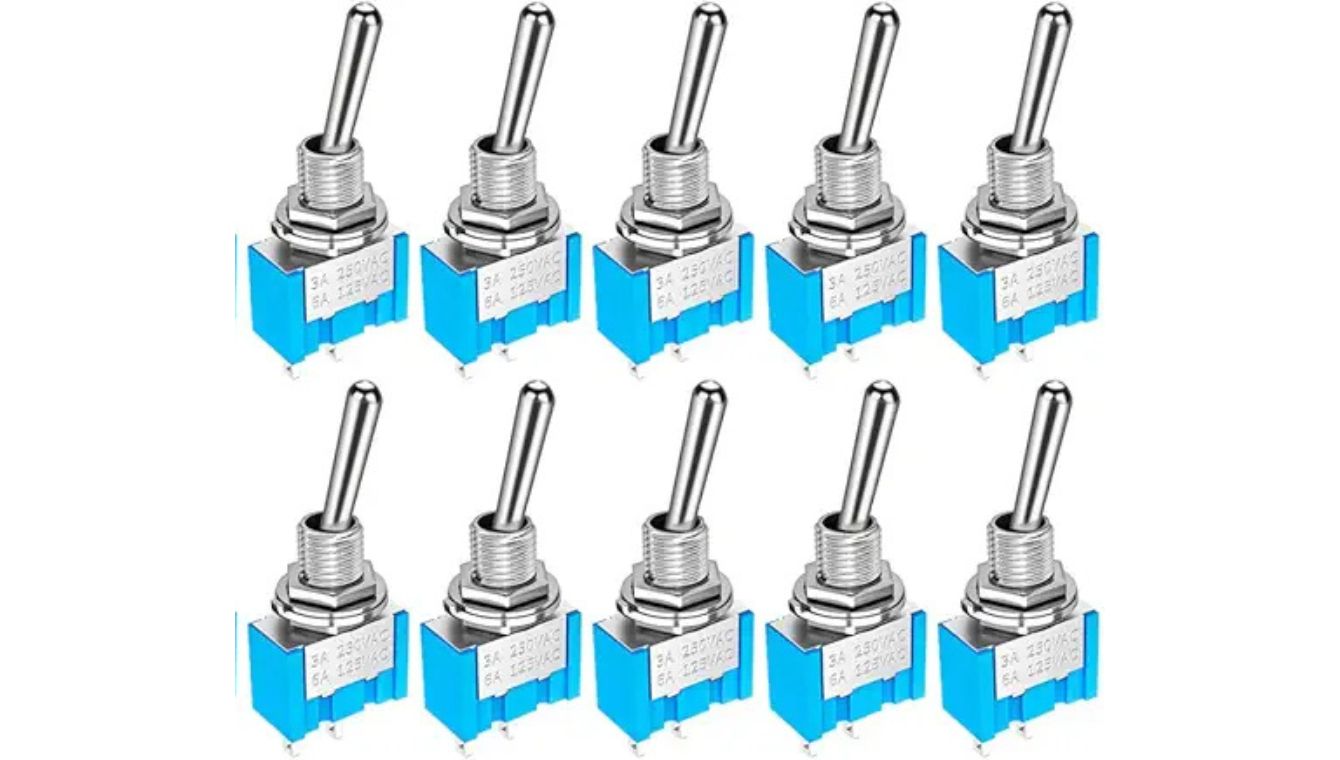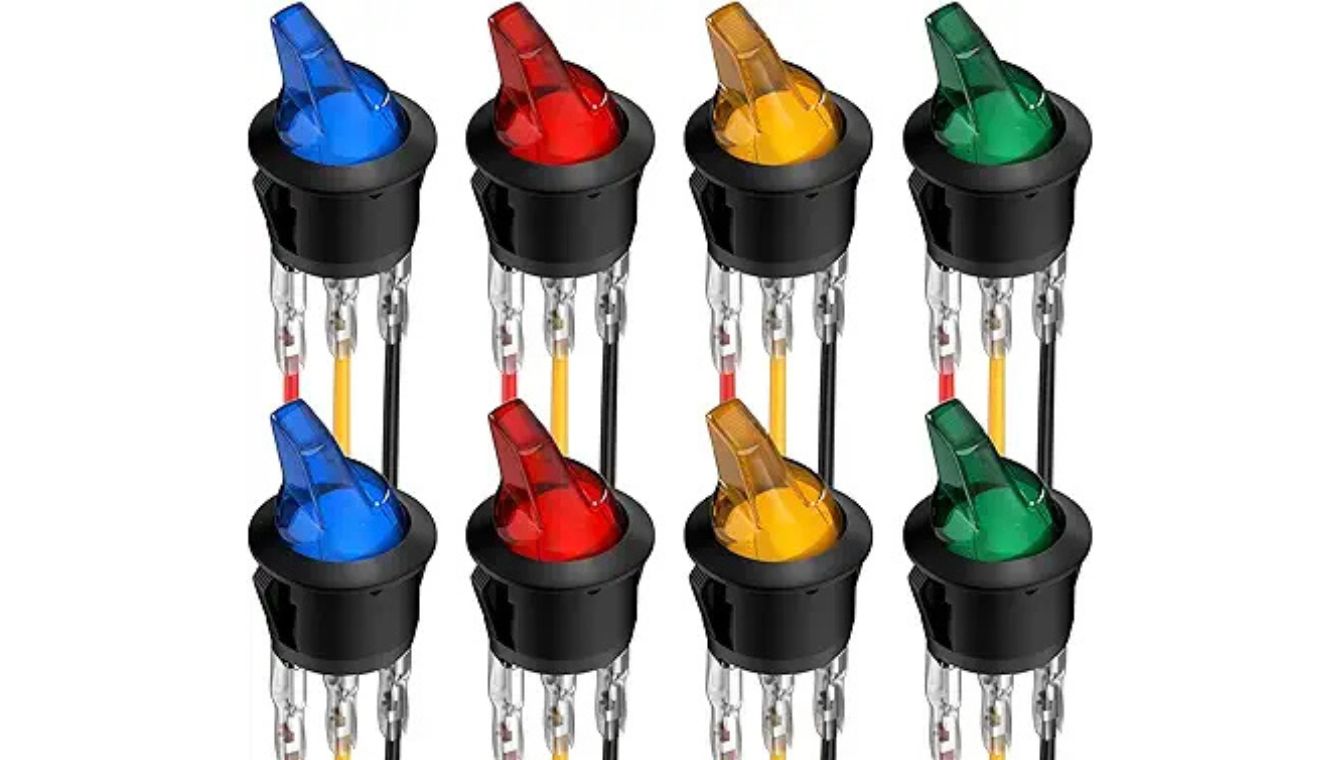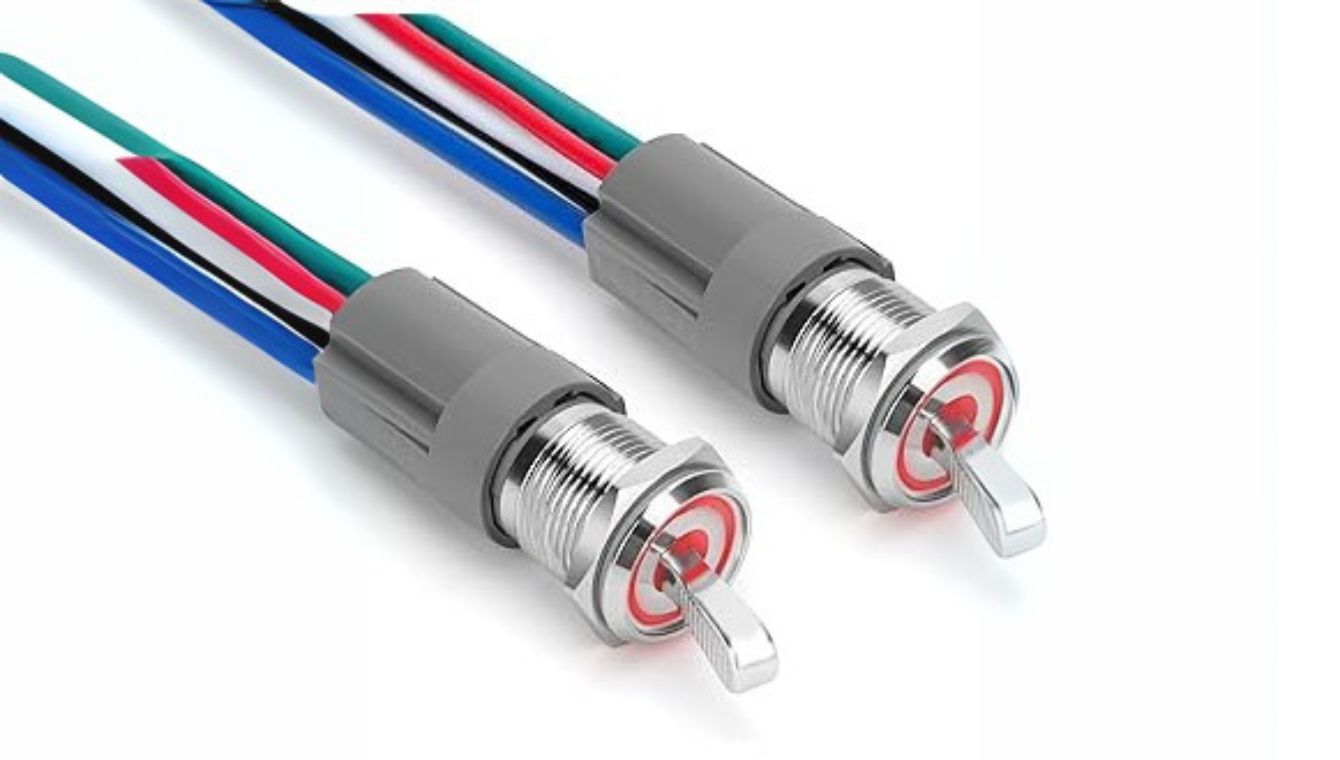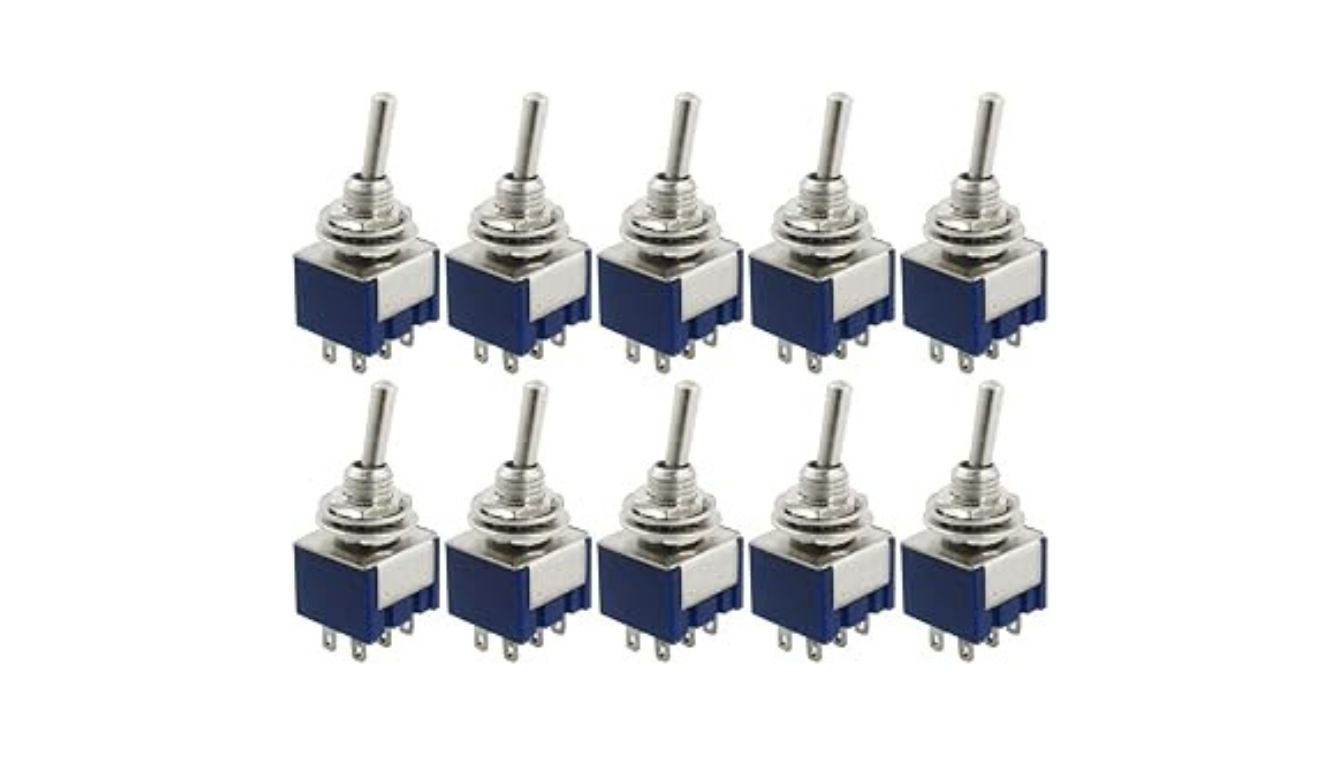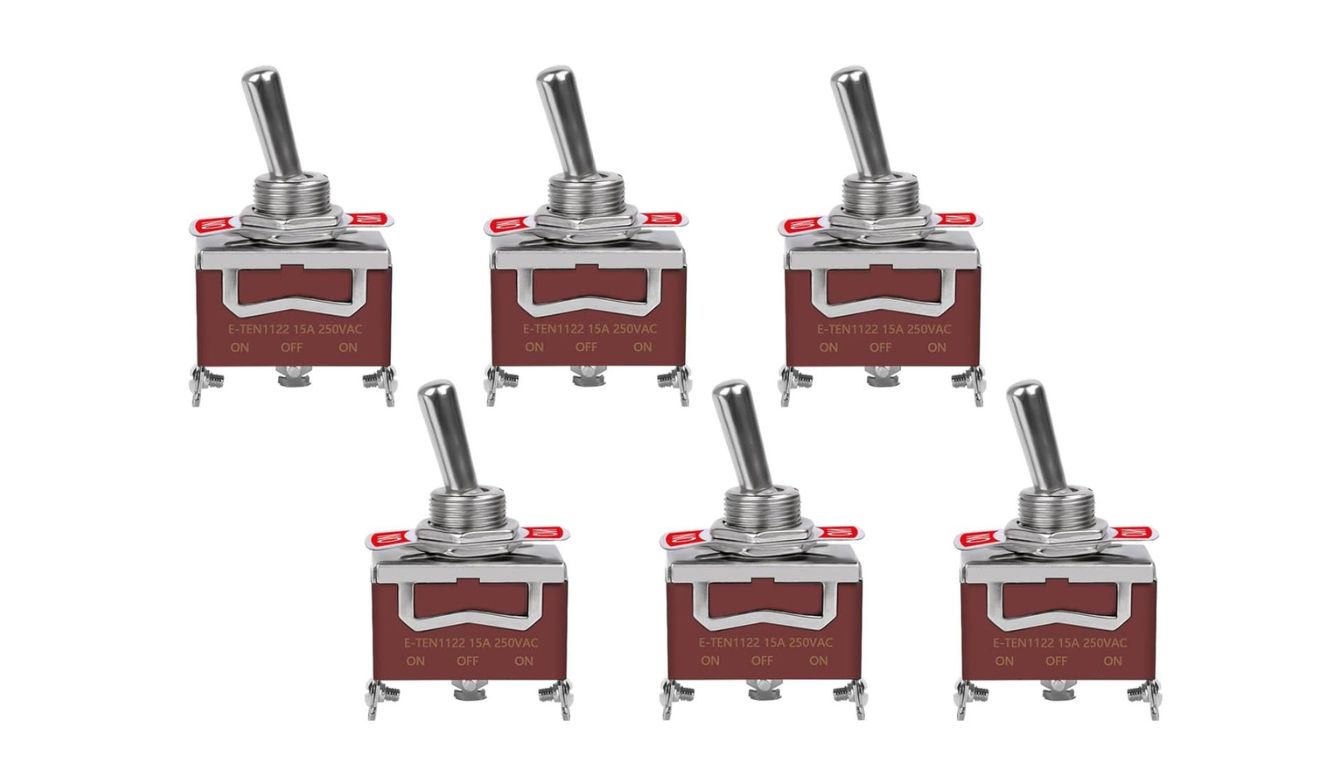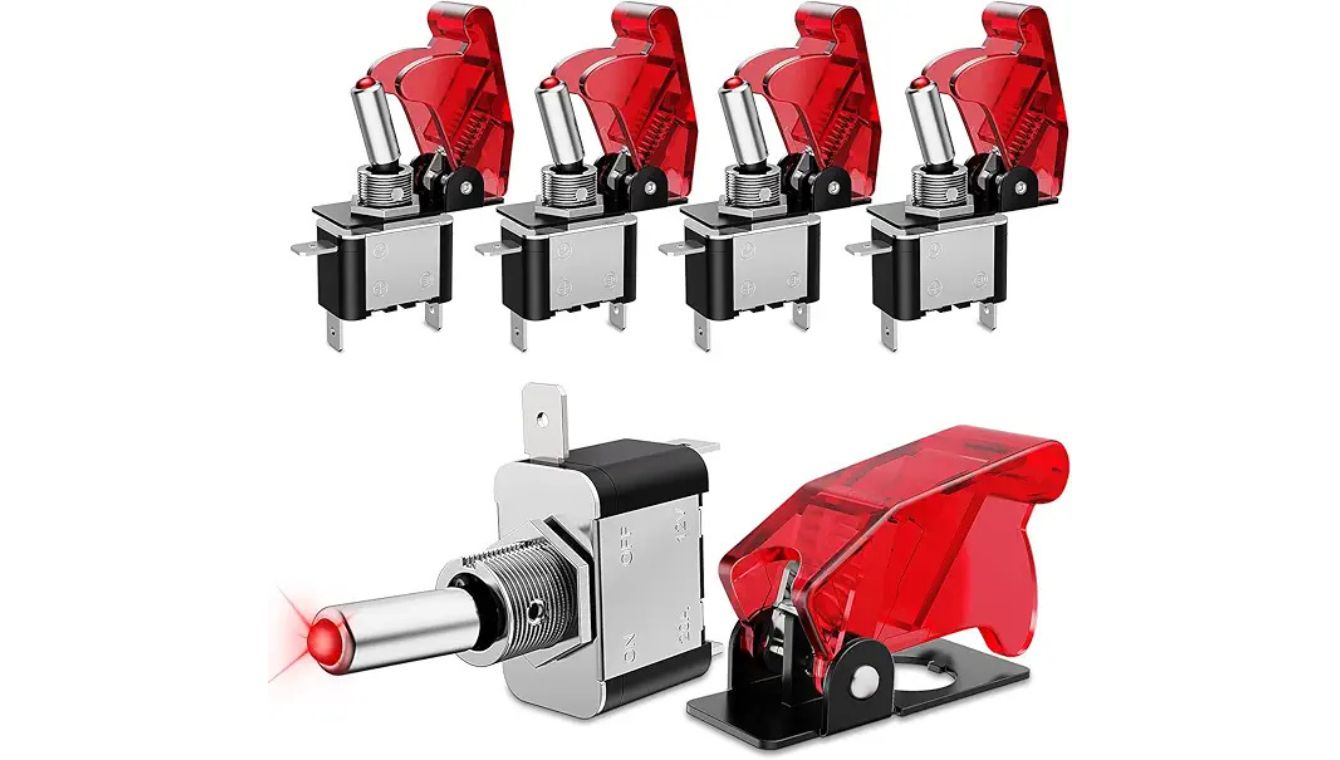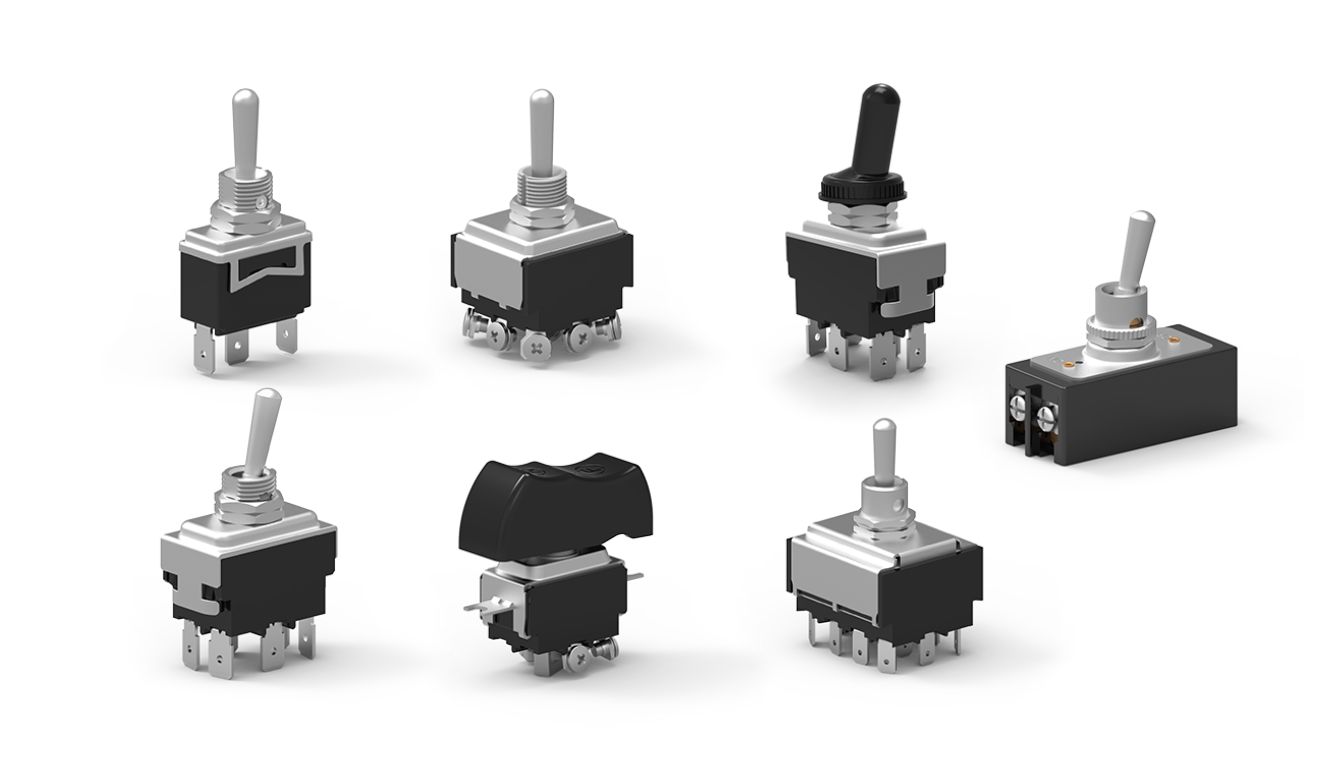How to Choose a High-Quality Toggle Switch for Your Application
Choose high-quality toggle switches for reliability and performance. Our switches feature durable materials, smooth operation, and excellent electrical conductivity. With customizable options, we cater to diverse applications, ensuring safety and longevity. As a leading in China, we offer competitive pricing, rigorous testing, and fast delivery. Trust our expertise to enhance your projects with superior toggle switches. Click to learn more!
Types of Toggle Switches
Toggle switches are mainly categorized by their pole and throw configurations, which define how many circuits they control and the number of positions each pole can connect to.
Single Pole Single Throw (SPST):
Controls one circuit with two terminals (on/off).
Simplest type, used for basic on/off functions.
Single Pole Double Throw (SPDT):
Controls one circuit but can connect to one of two terminals (two positions).
Used to switch between two circuits or change the direction of current (e.g., in car engines or three-way lighting).
Double Pole Single Throw (DPST):
Controls two independent circuits simultaneously with one toggle.
Useful for turning on/off two devices or circuits at once.
Double Pole Double Throw (DPDT):
Controls two circuits, each with two positions.
Like two SPDT switches combined, often used for reversing motor directions or selecting outputs.
With Full Product Certification



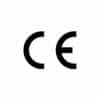



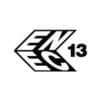
What are Toggle Switches?
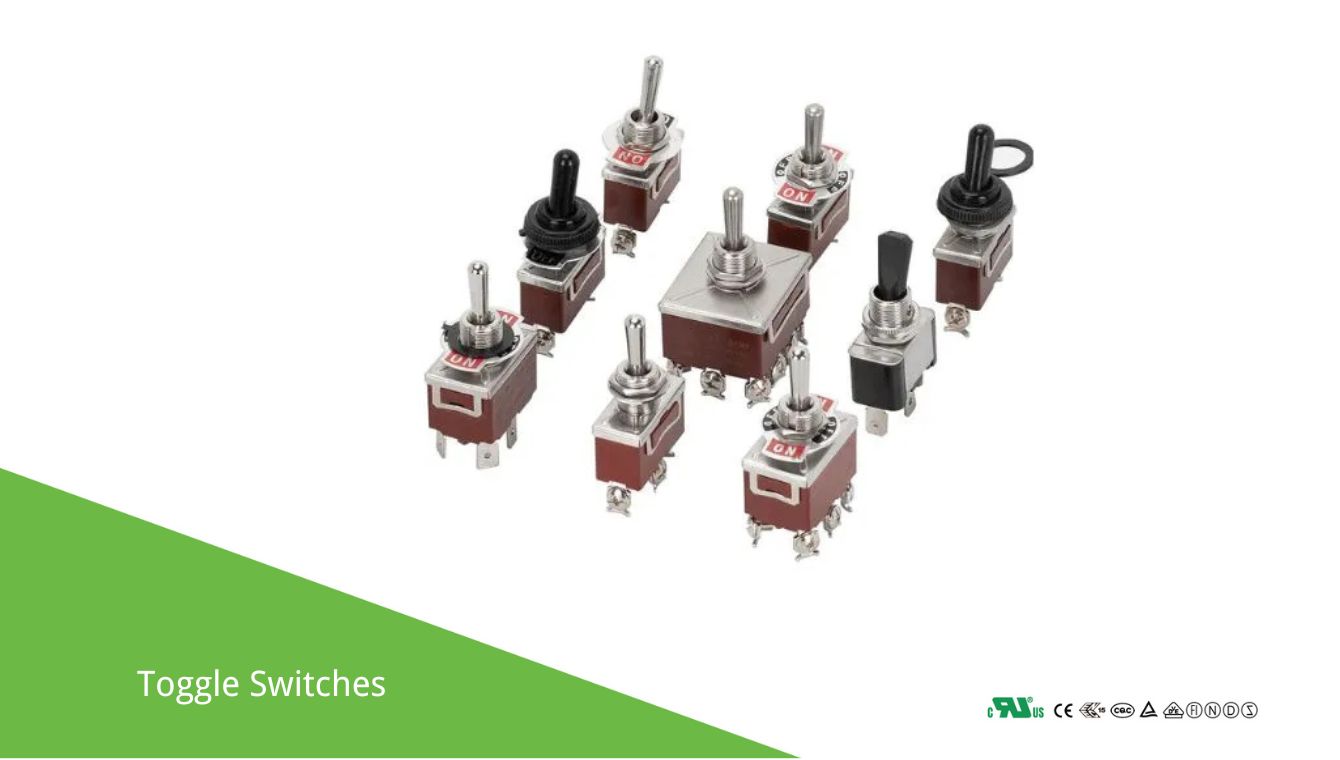
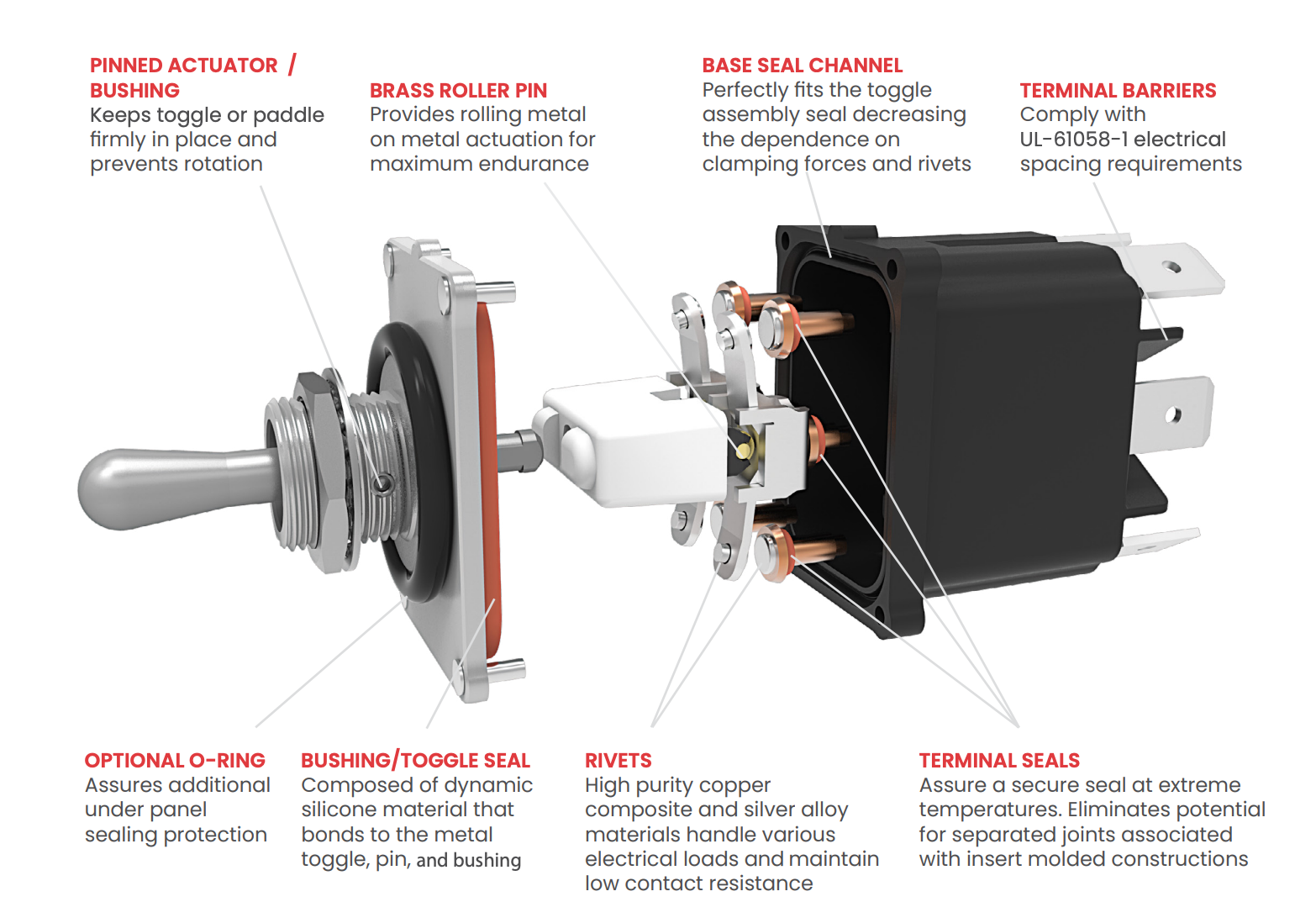
- Actuator (Lever or Handle): The external part that users manipulate to change the switch position. This lever typically pivots around a central point and can be moved between two or more positions.
- Contacts: The internal metal components that either connect or disconnect to complete or break the electrical circuit. These contacts are typically made from conductive metals like brass, copper, or silver, often plated with gold or nickel for better conductivity and corrosion resistance.
- Housing: The protective casing that contains the internal components and provides structural support. Housing materials vary depending on the application, with options including plastic, metal, or specialized materials for harsh environments.
How Do Toggle Switches Work?
How a toggle switch works is very simple! There is a lever on the switch body, and several sets of links inside.
The “off” position means that the internal structure is disconnected, preventing electricity from passing through the switch.
However, when the lever is moved to the “on” position, the structure closes and smoothly delivers electricity to the application device.


Why Choose WEUP as Your Trusted Toggle Switch Manufacturer?
Selecting the right toggle switch is a decision that extends far beyond a simple component purchase; it’s about forging a partnership with a supplier who understands your technical challenges, quality imperatives, and market demands. WEUP (cweup.com) stands out as a preferred partner for businesses worldwide, offering a compelling combination of quality, innovation, and dedicated customer support. Our approach is built on a foundation of engineering excellence and a deep commitment to helping our clients succeed in their respective fields, whether it’s automotive, industrial control, medical devices, or consumer electronics.
Uncompromising Quality and Reliability
At WEUP, our reputation is built upon the bedrock of quality toggle switches and unwavering reliability. We firmly believe that the performance of your end product is intrinsically linked to the quality of its components, and we spare no effort in ensuring our toggle switches meet the most stringent standards.
Our commitment to excellence is evident in every stage of our process, from meticulous design and material selection to precision manufacturing and rigorous quality control. We employ a comprehensive suite of testing procedures, which can include electrical lifecycle testing to simulate years of operation, environmental testing to ensure performance under extreme temperatures and humidity, and mechanical endurance tests to verify the robustness of our switch mechanisms.
We utilize only high-quality materials, carefully chosen for their conductive properties, mechanical strength, and resistance to wear and environmental factors, ensuring enhanced durability and consistent performance. Furthermore, WEUP adheres to relevant international certifications and standards, such as ISO for quality management, UL for safety, and RoHS for hazardous substance restrictions (please verify and replace with WEUP’s actual certifications), providing you with the assurance that you are partnering with a truly reliable toggle switch supplier.
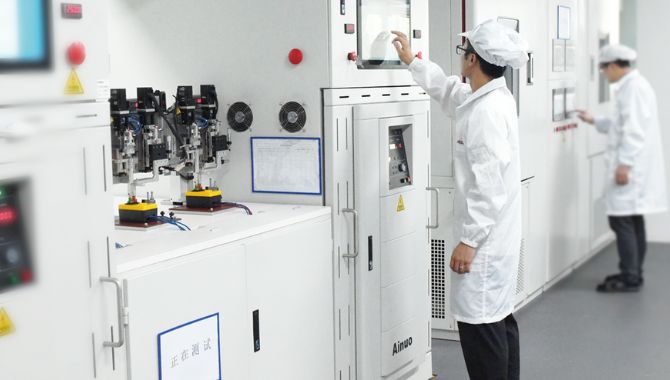
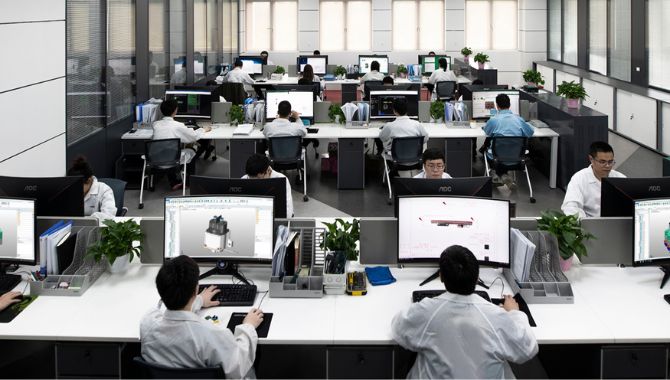
Expertise in Custom Toggle Switch Solutions
We recognize that standard, off-the-shelf components don’t always meet the unique or complex requirements of specialized applications. That’s why WEUP excels in providing custom toggle switch solutions, tailored precisely to your needs. Our experienced engineering team collaborates closely with you, taking the time to thoroughly understand your specific application challenges, operational environment, and performance targets. This collaborative toggle switch design process allows us to develop solutions that are not just functional but optimized for your system.
The scope of customization is extensive; we can modify actuators (style, length, material, color), terminals (type, orientation, plating), internal and external wiring configurations, sealing levels (from dust-proof to fully waterproof IP-rated solutions), housing materials, electrical ratings, and even custom markings or symbols for enhanced usability. The benefits of such tailored solutions are manifold, including improved performance, easier integration into your product, enhanced user experience, and often, a more cost-effective outcome by eliminating the need for workarounds or additional components. If you’re looking for a toggle switch that can transform your unique vision into a tangible, high-performing component, WEUP is your ideal partner.
Circuit Control Mechanism
- Making Contact: When the switch is moved to the “on” position, the internal contacts physically touch each other, creating a conductive path for electricity to flow through the circuit.
- Breaking Contact: When moved to the “off” position, the contacts physically separate, creating an air gap that prevents electricity from flowing through the circuit.
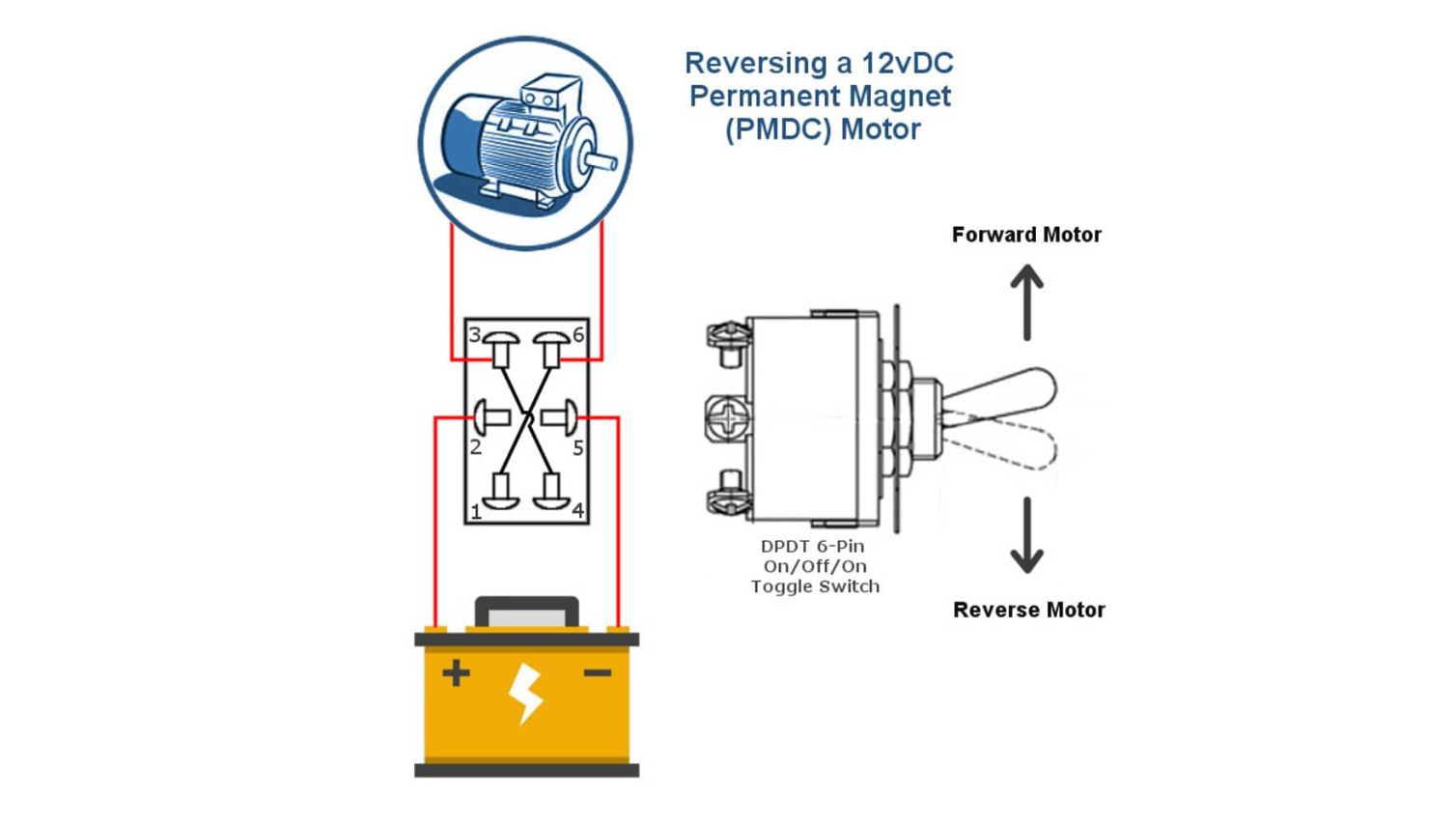
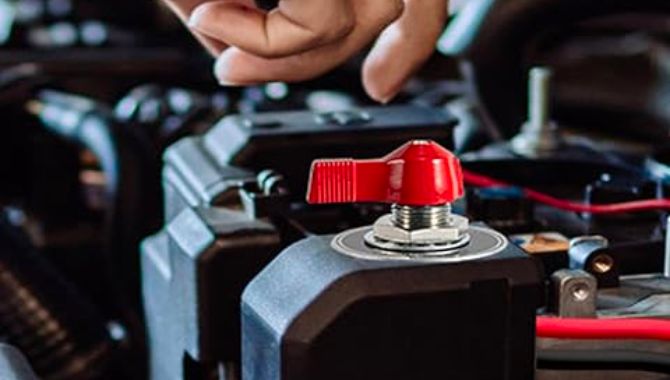
Maintained vs. Momentary Operation
- Maintained Operation: In this standard configuration, the switch remains in whatever position it is placed until manually moved again. When flipped to the “on” position, it stays on until deliberately switched off.
- Momentary Operation: These specialized toggle switches include a spring mechanism that automatically returns the lever to its default position when released. They function similarly to a doorbell button, remaining activated only while held in position.
Toggle Switches More Related Articles
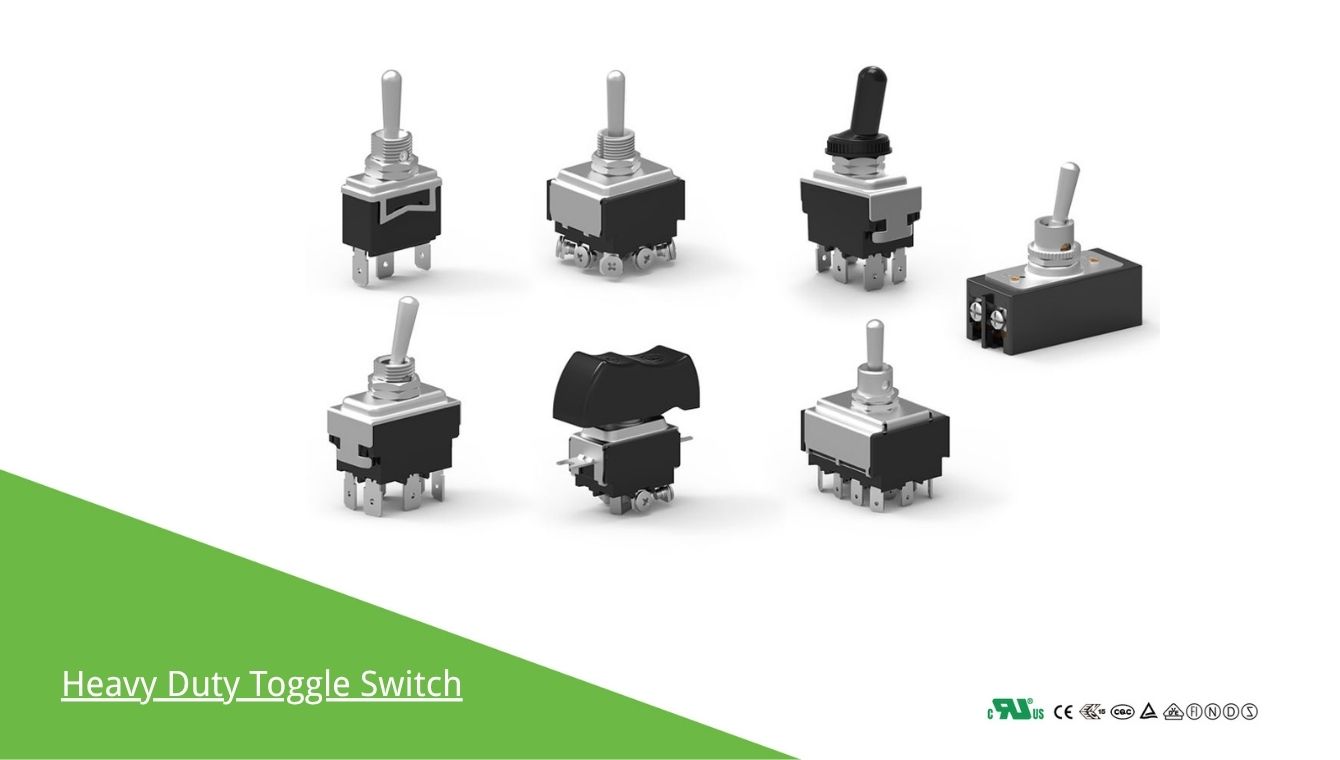
A rocker switch is an electrical switch that rocks back and forth to open or close a circuit. Pressing one side connects the circuit, while pressing the other disconnects it. Commonly used in appliances, vehicles, and power tools for easy on/off control.
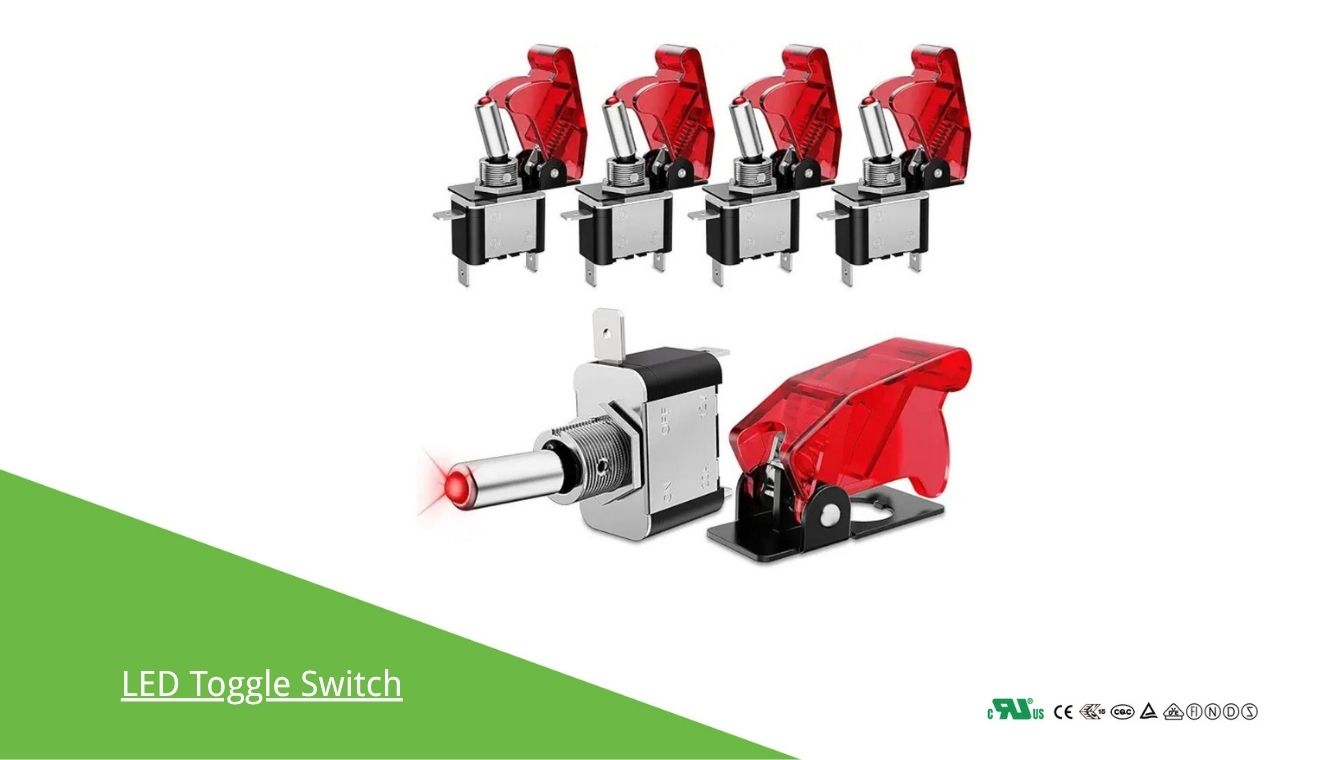
A single pole switch is an electrical switch that controls one circuit from a single location. It has two terminals and is commonly used to turn lights or devices on and off in homes. It is the most basic and widely used type of wall switch.
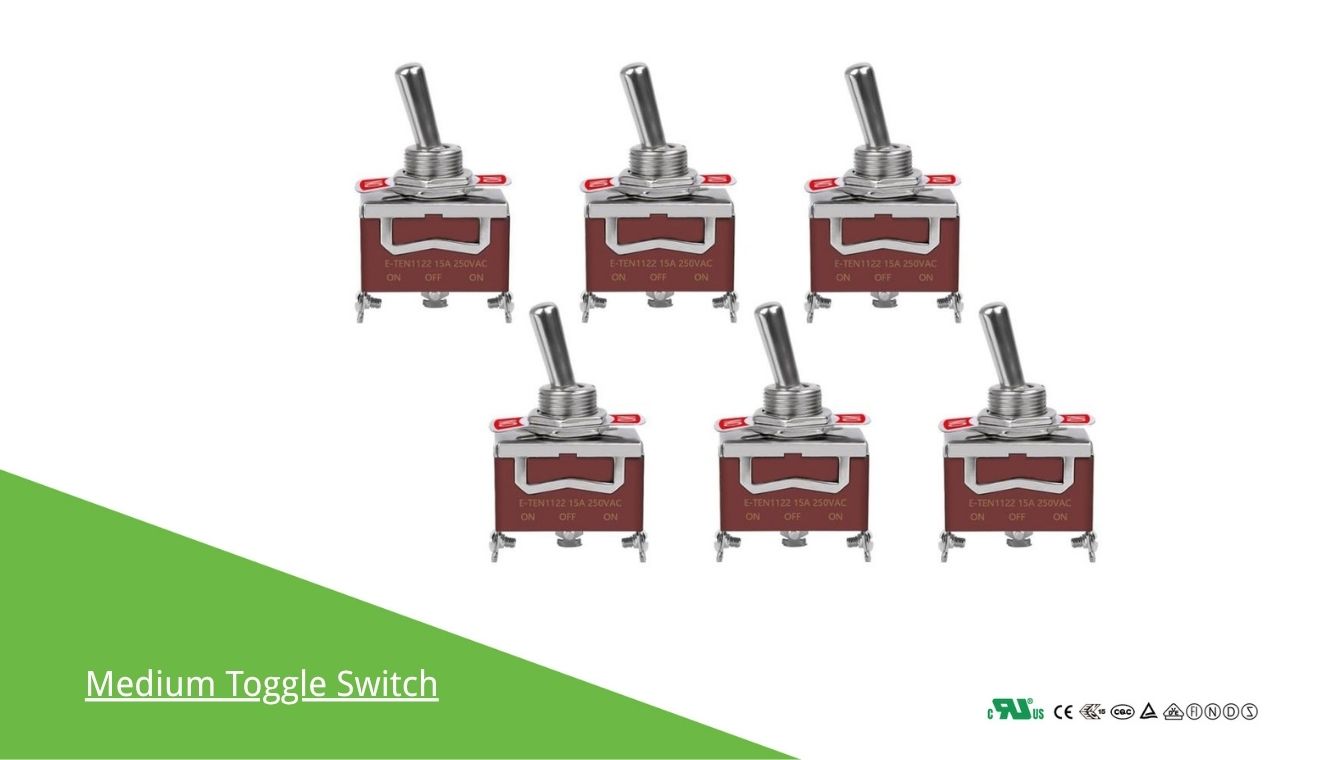
A double pole switch is an electrical switch that controls two separate circuits simultaneously with a single mechanism, breaking or connecting both live and neutral wires. It’s commonly used for appliances requiring higher voltage or complete isolation.
Related Product
Toggle Switches FAQs
Toggle Switches are commonly used in various applications, and people often have questions about them. Here are five of the most popular FAQs for Toggle Switches:
Toggle switches are typically made from durable materials like metal and high-quality plastic for the housing, with internal contacts made of conductive materials such as copper or silver. These materials ensure that the switches are robust, reliable, and capable of withstanding frequent use.
Yes, toggle switches can be used in both AC and DC circuits, provided they are rated for the appropriate voltage and current of the application. It is crucial to check the switch’s specifications to ensure it is suitable for the specific electrical requirements.
The advantages of using toggle switches include their simplicity, reliability, and ease of use. They are widely available in various configurations, making them versatile for different applications. Toggle switches are also durable and can handle high levels of current and voltage, depending on their design.
Yes, waterproof toggle switches are available and are especially useful in outdoor, marine, or industrial environments where the switch may be exposed to moisture, dust, or other harsh conditions. These switches are typically sealed with rubber or silicone to prevent water ingress and ensure long-term reliability.
Yes, many 12V toggle switches, including those from WEUP, are designed to withstand harsh environments. There are waterproof and dustproof models available that meet IP67 standards, making them suitable for use in marine, automotive, and industrial settings where exposure to water and dust is common.
Maintaining a toggle switch involves regularly inspecting it for signs of wear, ensuring it remains clean and free from dust and debris, and checking that the connections are secure. In environments exposed to moisture or dirt, it’s also important to ensure that any seals or gaskets remain intact to prevent damage.
A maintained toggle switch stays in the position it is toggled to until it is toggled back. For example, if you flip it to the “on” position, it stays on until you flip it to “off.” On the other hand, a momentary toggle switch only stays in the “on” position as long as you hold it down. Once you release it, it returns to the “off” position. This is ideal for functions that require a temporary connection, such as activating a horn or a starter motor.
Yes, in many cases, a toggle switch can be replaced with a rocker switch, provided the electrical ratings (voltage and current) and the type of operation (such as SPST or DPDT) are the same. However, you’ll need to ensure the replacement switch fits the existing mounting hole or panel cutout.
For high-current applications, it’s important to select a toggle switch that is rated for the specific current you need to control. Look for switches with a higher amperage rating, durable materials, and robust construction. Some high-current switches are also equipped with features like arc suppression to handle the increased electrical load.
The IP (Ingress Protection) rating indicates the level of protection a toggle switch has against dust and water. For example, an IP67 rating means the switch is completely dust-tight and can be submerged in water up to 1 meter deep for a specified time. This rating is particularly important for switches used in outdoor, marine, or industrial environments.




